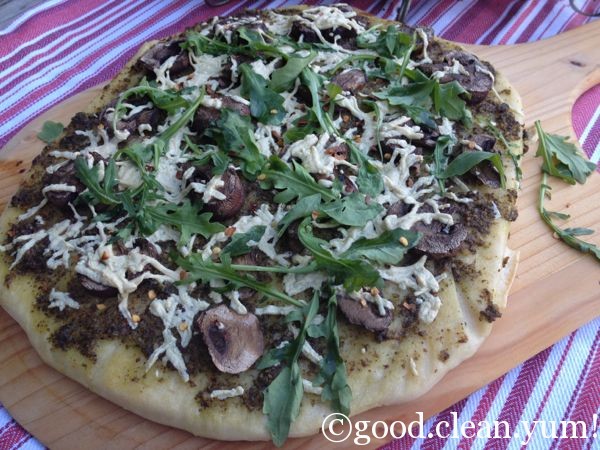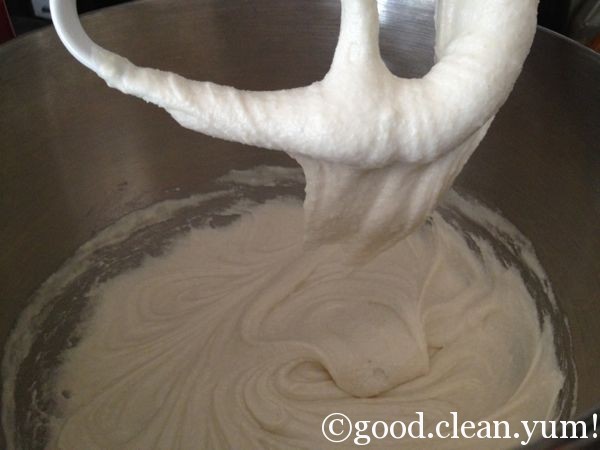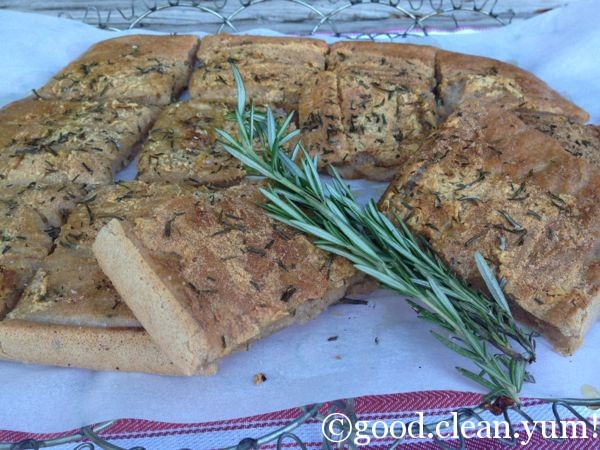
Shifting Tastes
When I finally realized I had a gluten sensitivity – after many visits to specialists, umpteen tests and a couple of barium swallows thrown in for good measure – my whole world seemed to shift. Yes, I felt much more focused and energetic after deleting gluten from my food choices and yes, my body was able to digest properly and I lost 20 pounds over time; however, I was not entirely thankful. It was 2001 and I mourned the loss of croissants, bagels, noodles and pastries.
And I missed eating pizza.
There were few gluten-free options back then and the ones that did exist tasted awful! Truly – just like wet cardboard. I tried to tell myself that they were fantastic, but honestly, the gluten-free products tasted vile. Gluten-free breads were as heavy as bricks and you had to toast them to a crisp to make them moderately edible.
And pizza crusts? The only ones that I could find in the Toronto health food stores back then were made of flattened grains of rice and you could chip a tooth on them. But, I valiantly gnawed at them, wanting a taste of “normal” and of “familiar.”
Sadly, I realized that I would have to admit to myself that I needed to stop expecting gluten-free products to taste like things had in my “wheat flour world.” It took years for me to shift from that expectation to appreciating the taste of gluten-free.
Happily during those same years, gluten-free came of age! Although I have yet to find a gluten-free croissant that bowls me over, the gluten-free breads, muffins, bagels, pasta, cookies and pizza crusts you can buy ready-made or as mixes in stores and online taste really good. Not the same, but good.
Sometimes shifting into being okay with good is what one needs to do to step into gratitude. Being okay with good opens different doors. Being okay with good sets expectations free to enjoy what is.
Gluten-Free Pizza Dough #1
This pizza dough is based on the recipe put out by the CIA (The Culinary Institute of America). The change that I made is substituting brown rice flour for the soy flour the CIA calls for. My body does not do well with soy, so I try to avoid it. However, if you like it, please use soy flour in equal amounts to the brown rice flour.
The mixing technique/baking technique in both pizza dough recipes is the CIA’s. One of their tips is to finish the final baking on the barbecue for a crispy crust. This recipe works beautifully and produces a tasty pizza crust. You can make it as thin or as thick as you like. Top it with your favorite pizza combinations.
Or try what I did: after the first bake time, I topped it with olive oil, store-bought pesto, cremini mushrooms and Daiya mozzarella “cheese.” Daiya makes a dairy-free/gluten-free/soy-free/cholesterol-free cheese alternative (out of tapioca, pea protein and non-GMO oil) that melts and stretches.
After the baking was finished, I scattered the pizza with baby arugula leaves, red pepper flakes and a drizzle of extra-virgin olive oil. Divine!
1 ½ cups white rice flour
1 ¾ cups tapioca starch (also called tapioca flour)
2 ¼ cups brown rice flour
1 teaspoon instant dry yeast (about half a packet)
2 ¼ cups water
1 teaspoon salt
1 ¼ teaspoons guar gum
¼ cup grapeseed oil
How to make Gluten-Free Pizza Dough #1:
In a large bowl combine white rice flour, tapioca starch and brown rice flour. (I use a whisk for this)
*** This makes 5 ½ cups of flour mix; you will only need 3 2/3 cups of flour mix for this recipe. Measure out 3 2/3 cups flour mix into a small bowl. Store the extra in a plastic bag in the fridge for future use. ***
In another large bowl, combine 1 cup of the pre-measured flour blend, the yeast and 1 cup of water. Mix this with a fork until smooth. Cover bowl with plastic wrap and let rise for 45 minutes – 1 hour. You will see bubbles have formed – this tells you that the dough is ready for the next step.
Into the remaining dry flour mix, stir in the salt and the guar gum, whisking to combine thoroughly.
Combine the wet and dry flour mixtures; add in the remaining 1 1/4 cups water and the oil. mix for 2 minutes on low speed, using the paddle attachment (or one beater on a handheld mixer).

Mixture will be a very soft and loose dough. Spoon into a large plastic freezer bag, or piping bag if you have one. (I find it easiest to do this by sitting the bag in a small pitcher or large glass for stability).
Line 2 baking sheets with parchment paper. Twist freezer bag with dough mixture until the dough settles into one corner of the bag. With a scissor, snip off a corner and pipe the dough into four 8-inch rounds or two 12-inch rounds – making the dough as thick or thin as your tastes like. Spread gently to even out surface with a wet offset spatula or spoon.
You may also pipe the dough directly into a greased pizza pie tin.
Rest the crust for 30 minutes in a warm spot.
Preheat oven to 375 degrees Fahrenheit. Partially bake the crust for 15 minutes.
Allow crusts to cool a bit and then turn them over so the bottom of the crust is now facing up and top with your favorite toppings.
Bake an additional 8-10 minutes or finish off the cooking on a barbecue grill for a crisper crust.
This recipe makes about 1 to 2 large gluten-free flatbread/pizza, or 3 to 4 smaller 6-8 inch pizzas depending on how thickly or thinly you spread the dough.
Alternatively: bake the crusts on both sides, cool completely, wrap in plastic wrap and place in a freezer bag. Freeze crusts until needed. At that time, remove frozen crusts, top as desired and bake in preheated 350 degree F oven until defrosted and baked to your liking, about 15 minutes.

Gluten-Free Pizza Dough #2
Although I enjoy the Gluten-Free Pizza Dough #1 and it even looks like regular pizza dough, I wanted a healthier version. Using it as a guide, I added in some quinoa flakes for some protein and a bit of texture. The teff flour is ground from the whole grain (lots of the bran and germ) and is native to Ethiopia. It is a beige-colored flour that is a good source of fiber, protein and iron.
For this recipe, I spread the dough out onto an entire cookie sheet and made a flatbread. After the first baking, I spread the crust with olive oil, roasted garlic cloves that I had mashed into a paste (from 2 whole bulbs of garlic), and 1 tablespoon of minced, fresh rosemary.
After the baking was finished, I drizzled extra-virgin olive oil over top and sprinkled the flatbread with Himalayan pink salt. This is a definite try for the garlic lovers!
2 ¾ cups brown rice flour
1 ¾ cups tapioca starch
½ cup quinoa flakes
½ cup whole grain teff flour
1 teaspoon instant yeast
2 ¼ cups water
1 teaspoon salt
1 ¼ teaspoons guar gum
¼ cup grapeseed oil
How to make Gluten-Free Pizza Dough #2:
In a large bowl combine brown rice flour, tapioca starch, quinoa flakes and teff flour. (I use a whisk for this)
*** This makes 5 ½ cups of flour mix; you will only need 3 2/3 cups of flour mix for this recipe. Measure out 3 2/3 cups flour mix into a small bowl. Store the extra in a plastic bag in the fridge for future use. ***
In another large bowl, combine 1 cup of the pre-measured flour blend, the yeast and 1 cup of water. Mix this with a fork until smooth. Cover bowl with plastic wrap and let rise for 45 minutes – 1 hour. You will see bubbles have formed – this tells you that the dough is ready for the next step.
Into the remaining dry flour mix, stir in the salt and the guar gum, whisking to combine thoroughly.
Combine the wet and dry flour mixtures; add in the remaining 1 1/4 cups water and the oil. mix for 2 minutes on low speed, using the paddle attachment (or one beater on a handheld mixer).
Mixture will be a very soft and loose dough. Spoon into a large plastic freezer bag. (I find it easiest to do this by sitting the bag in a small pitcher or large glass for stability).

Line 2 baking sheets with parchment paper. Twist freezer bag with dough mixture until the dough settles into one corner of the bag. With a scissor, snip off a corner and pipe the dough into four 8-inch rounds or two 12-inch rounds – making the dough as thick or thin as your tastes like. Spread gently to even out surface with a wet offset spatula or spoon.
You may also pipe the dough directly into a greased pizza pie tin.
Rest the crust for 30 minutes in a warm spot.

Preheat oven to 375 degrees Fahrenheit. Partially bake the crust for 15 minutes.
Allow crusts to cool a bit and then turn them over so the bottom of the crust is now facing up and top with your favorite toppings.
Bake an additional 8-10 minutes or finish off the cooking on a barbecue grill for a crisper crust.
This recipe makes about 1 to 2 large gluten-free flatbread/pizza, or 2 to 3 smaller 6-8 inch pizzas depending on how thickly or thinly you spread the dough.
Alternatively: bake the crusts on both sides, cool completely, wrap in plastic wrap and place in a freezer bag. Freeze crusts until needed. At that time, remove frozen crusts, top as desired and bake in preheated 350 degree F oven until defrosted and baked to your liking, about 15 minutes.
Note:
I get my gluten-free flours and guar gum from Bob’s Red Mill, either at stores or online (www.bobsredmill.com). Please see my post under the “happy in” tab on this site for some more information on this fabulous company and their products.
Guar gum is made from the ground seeds of a tree native to India and has eight times the thickening power of cornstarch. It’s a great all-purpose thickener.



